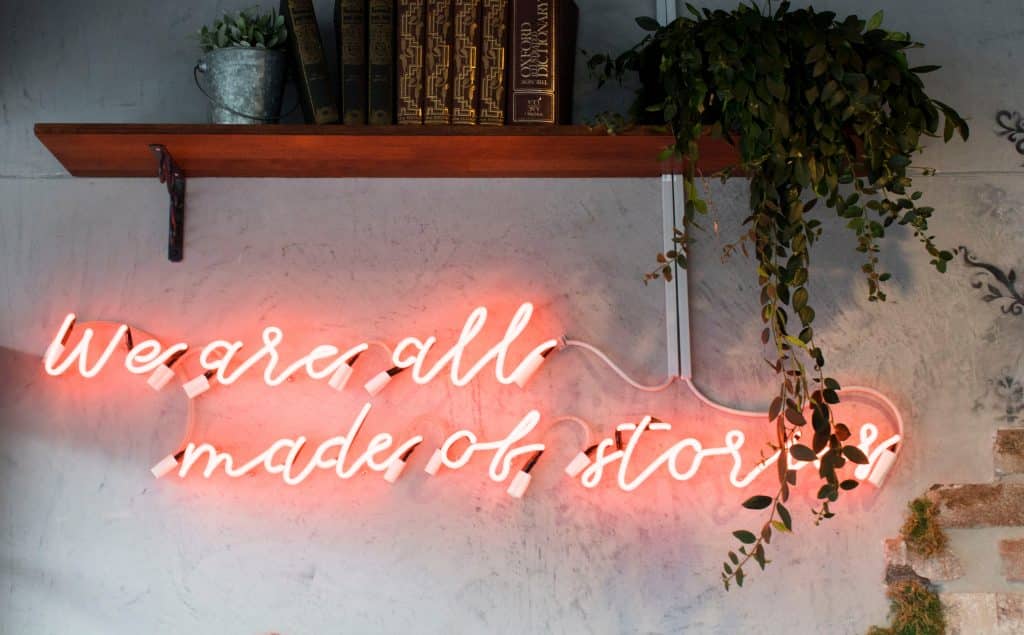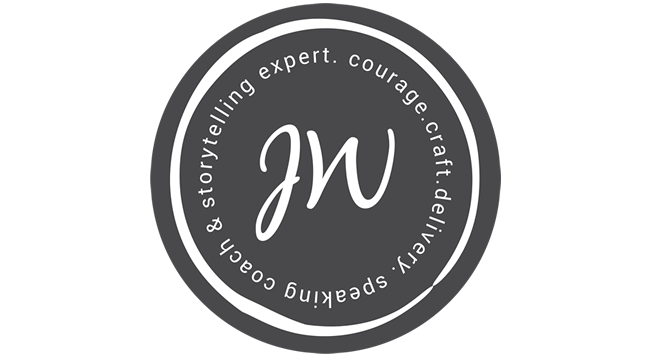How to Tell a Spine-Tingling Story
September 19th, 2019

Over the years, I’ve learned a lot about stories, and what makes a story great. I’ve listened, I’ve watched, I’ve told stories myself — and have figured out one or two things about what makes a story spine-tingling.
It’s not (necessarily) about some big major traumatic event in your life.
It’s not a string of events leading to an end.
It’s not about achieving perfection.
It’s not about finessing it so it applies to everyone who might hear.
It’s not about spectacle or fanfare.
So then, what IS it about, Johanna?
I’m laying out some of the secrets here for you right here:
- A story is about people with problems. No problem = No story. Nobody really wants to hear the story about that beautiful day with your love when the skies were sunny and you basked in your own awesomeness, ate bonbons and everything was beautiful. But the bear who came along and interrupted your picnic? Tell us about that! Or how you lost your car keys and had to hitchhike home in the rain? Yes, please. Tell us that.
- Yes, stories are about people with problems, but we also want to hear how you overcame that problem. We’re not that interested in victim stories. So if you hitchhike home in the rain and feel bad about yourself and decide that the world is out to get you and everything sucks….bzzzzt. Not so much. But tell us about the epiphany you had about the best laid plans on the way home, and how the rain reminded you that you’re human, and you decided to quit your job and start your novel instead, then cool, your journey home in the rain will be a gift to us.
- But that doesn’t mean everything has to be neatly tied up in a bow at the end. In fact if you tie things up too neatly, we might roll our eyes. We want to hear the questions you’re left with, (where did I leave those car keys anyway?) and the humor that shines a light on your imperfection, (wet socks, anyone?) and the unexpected surprise that keeps us leaning forward on the edge of our seats. (turns out your boss was just about to fire you anyway)
- Speaking of imperfections, make sure to show us yours. If you go on and on about your awesomeness, it’ll be hard for us muggles to relate. We might shut down, tune out and check our phones while you pat yourself on your back and gaze in the proverbial mirror.
But if you show the cracks in your awesomeness, the places where your imperfection leaks out, we’ll say “Oh! She’s just like me! He really gets it! It’s as if he’s telling my story!”
That’s what you’re after. That’s when connection happens. So be willing to show the quirks you might normally hide. (In other words, don’t hide the fact that this isn’t the first time you’ve lost your keys.) - A story happens in space and time. Not in your head. Not in the idea of a thing. It’s not a rant or a philosophical essay or a description of how you sat alone in a room and contemplated something.
We don’t really want to hear about the life-changing epiphany you had without telling us exactly where you were sitting when it happened, and what time it was, and what happened before and what happened after. Let us experience the epiphany rather than you explaining it to us.
The best way for that to happen is to PUT THE STORY IN A TIME AND A PLACE. That way something will happen, because something always happens in time and space, and the epiphany will be self-evident without you trying to explain it. - Speaking of something happening, SOMETHING’S GOTTA HAPPEN! That’s the #1 essential ingredient to a great story. But that doesn’t mean your story is just a long string of “something happens” tied together by a whole bunch of ands.
Think cause and effect: Something happens in your story, and then BECAUSE OF THAT something else happens. And then BECAUSE OF THAT something else happens. Then BECAUSE OF THAT you have a big (or little) aha, and we all go home happy.
But something’s gotta happen. - A story is about change. Transformation. Something’s different at the end than it was at the beginning. Doesn’t have to be earth shattering, but it’s important that you (or the protagonist) be impacted by the thing that happens. You have to be changed. This goes back to point #2. How’d you overcome the problem? How were you changed by the thing that happened? That transformation is what we get to experience vicariously through you. We feel you being impacted by the thing that happens. We connect our humanity with yours. The world becomes a tiny bit smaller.
- Get specific. The universal is in the details. The truth is no one is really that interested in your story (except maybe your mom and your best friend). What we’re interested in is how your story sparks the stories inside ourselves. How it takes us into a world we never knew before. How it reminds of the challenges we’ve overcome, or the adventures we once had, or haven’t had yet.
We want to hear how your story teaches us how to be human. We want the universal truth that lives inside your story. But the more deeply you go into the specific details of your story (What color was the sky? What were you secretly thinking while the rain poured down? What did the grass smell like?) Those specific details of your story become the portal to the universal truth that I can then better relate to. - Stakes! A stories gotta have stakes! A good story is about someone who really really wants something they may or may not get. Or someone who has something they may or may not lose. The “may or may not” part is the stakes. That’s what puts us on the edge of our seats. That’s what makes us wonder? (Is he gonna get the girl? Is she gonna make it home? Is he gonna fall off the horse? Is she gonna lose her job?) Make us wonder how the story’s gonna end.
- Which reminds me of one of my favorites: Tell the story as if you don’t know how it ends. Bring us right into the action. Right into the mystery. Right into the “What’s gonna happen next?!?!) If you tell it in reporter mode, just reporting on a thing that happened a long time ago that you already know the ending to, we’re more likely to yawn. But bring us right into the action, join us in the mystery, and you’ll have us right on the edge of our seats, leaning in for the next word.
I’ve got more tips where those came from, but I’’ll stop at 10. I don’t want to overwhelm you. Leave a comment to let me know if these were helpful for you!
Johanna
2 responses to “How to Tell a Spine-Tingling Story”
Leave a Reply
« How to Make Your Big Vision a Reality | When Public Speaking Fear Gets the Best of You »


 FACEBOOK
FACEBOOK INSTAGRAM
INSTAGRAM LINKEDIN
LINKEDIN SUBSCRIBE
SUBSCRIBE
Johanna, you know your stuff – and you know the stuff of storytelling. These tips are helpful, great reminders to help us be successful. I am so grateful for how much you share to help the rest of us. Thank you Johanna. See you at the slam.
Thanks Carol! Looking forward to seeing you at the slam tonight. Maybe put your name in the hat?!